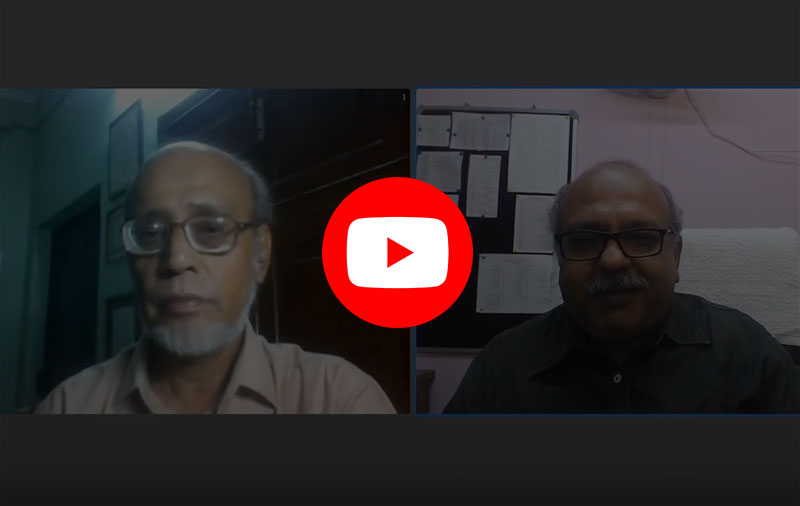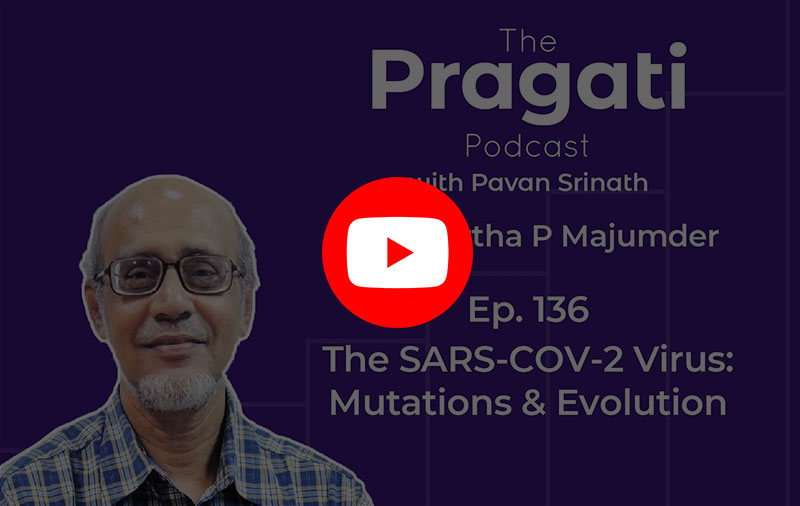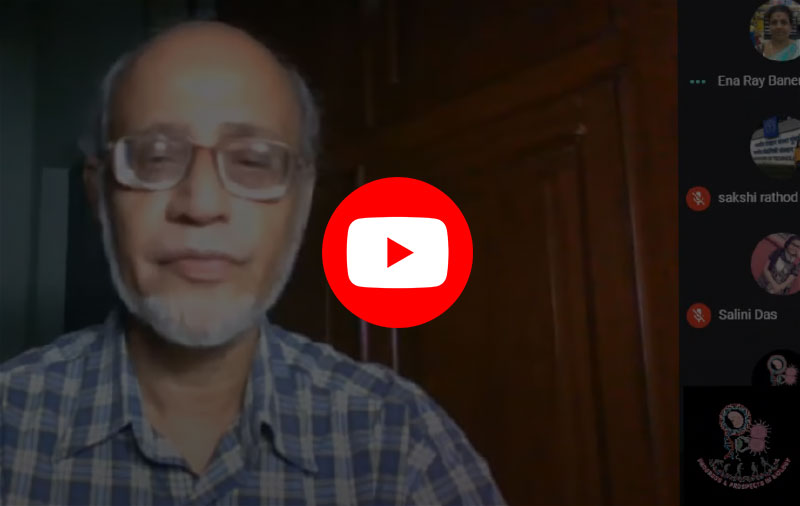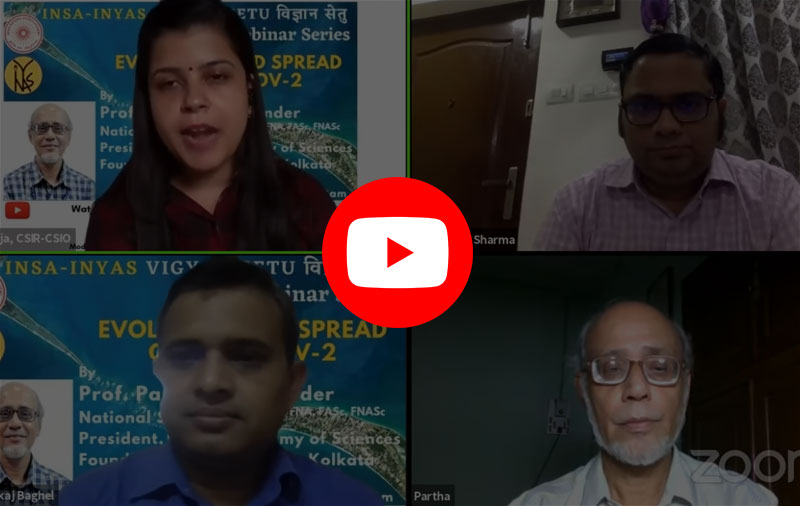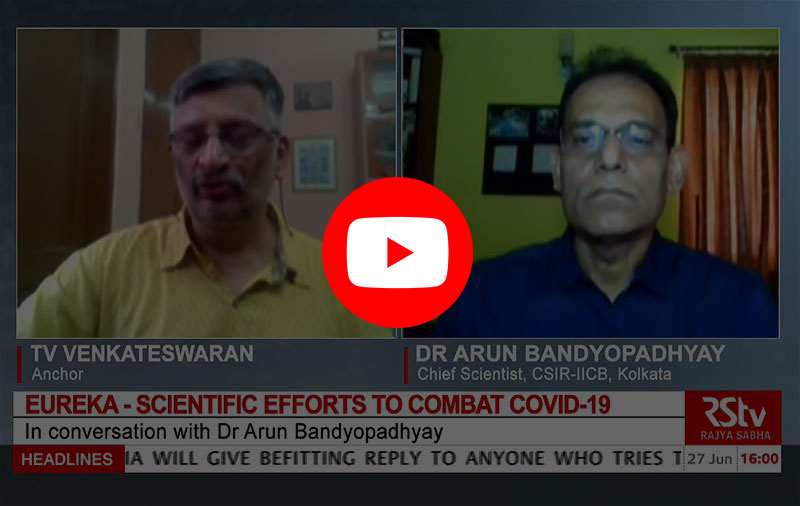VIDEO
- NDTV - Prime Time with RAVISH reports on 17 May 2021 the Scientific Leadership of Prof. Partha Pratim Mazumder, President, WAST
-
Coronavirus NCSM interview
Talks and interviews of Prof. Partha Pratim Majumder, President, WAST on topics related to the coronavirus
Article
-
Prof. Partha Pratim Majumder, President, WAST
has helped kick-start testing for SARS-CoV-2 in many district hospitals of West Bengal. He has written several articles on SARS-CoV-2 in newspapers and magazines.
- Prof. Saptarshi Basu, FAScT, Professor, Indian Institute of Science Bangalore has contributed on modeling the role of respiratory droplets in Covid-19 type pandemic. The technical article co-authored by him can be viewed here
- Dr. Bikash Mandal, FAScT, Principal Scientist, Advanced Centre for Plant Virology, Indian Agricultural Research Institute, New Delhi, and the editor-in-chief of VirusDisease has facilitated publication of a special issue of VirusDisease on COVID-19.
https://www.springer.com/journal/13337
He is working on plant virus genome-based gene expression in plant and has proposed a research project on the generation of COVID-19 vaccine in the plant system.
-
A team of researchers, comprising of the WAST Fellows Prof. Ranjan Ganguly, Prof. Achintya Mukhopadhyay, and Prof. Swarnendu Sen from the Center for Development of Appropriate Social Technologies (CAST), Jadavpur University, Kolkata, India, in developing low-cost, three layer surgical mask for the use of general public. To ease strain on the supply of masks to the essential healthcare sector, it has become imperative that ordinary people rely more on home-made masks that can be easily put together using commonly available materials, while at the same time performing reasonably at arresting the ingress or egress of airborne droplets. The team proposed a simple do-it-yourself (DIY) method for preparing a three-layered face mask that deploys two hydrophobic polypropylene nonwoven layers interspaced with a hydrophilic cellulosic cloth. The first hydrophobic layer, facing the user, allows high-momentum droplets (e.g., expelled by a sneeze or cough) to pass through and get absorbed in the next hydrophilic layer, thereby keeping the skin in contact with the mask dry and comfortable. The third (outermost) hydrophobic layer prevents penetration of the liquids from the middle layer to the outside, and also arrests any airborne droplets on its exterior. Simple tests showed that this mask performed better in arresting the droplet transmission as compared to surgical masks available in the market. The technology has already been picked up by MSME entities, with minor modifications in the physical layout, for mass production. The scientific aspect of the work has been published in Transactions of the Indian National Academy of Engineering, COVID- Special Issue, June 2020
(https://www.ncbi.nlm.nih.gov/pmc/articles/PMC7271140/) and has also featured in Nature Public Health Emergency Collection (COVID-19 Initiative).
Copyright © West Bengal Academy of Science and Technology (WAST) | All Rights Reserved

